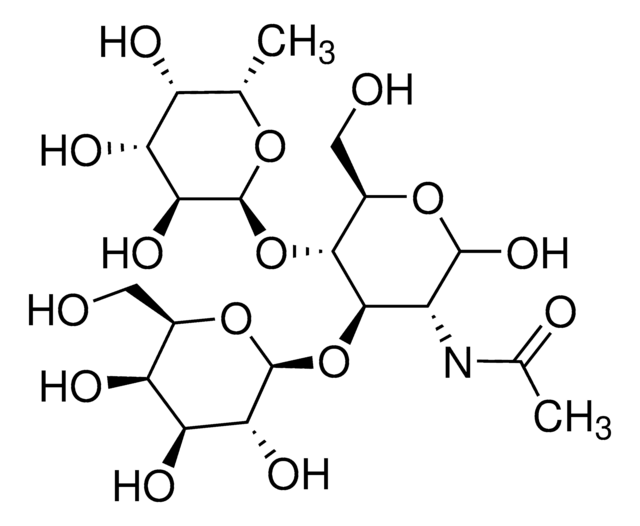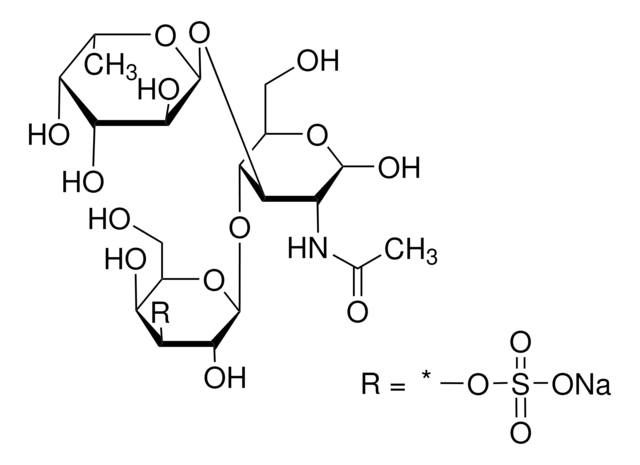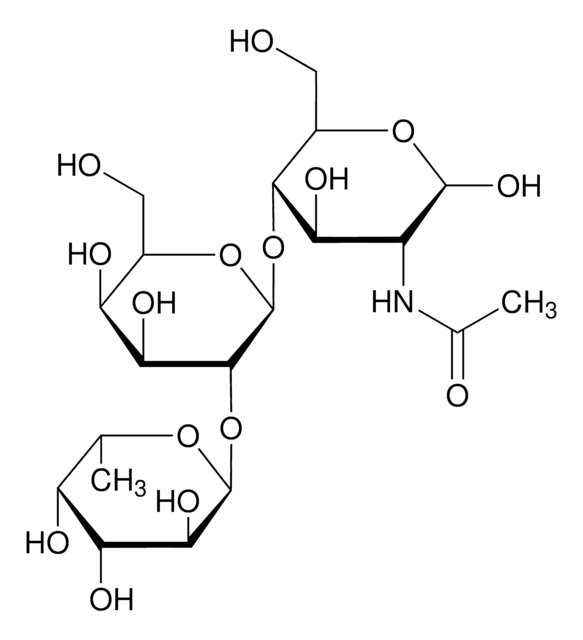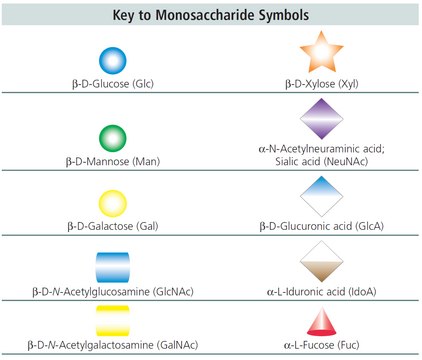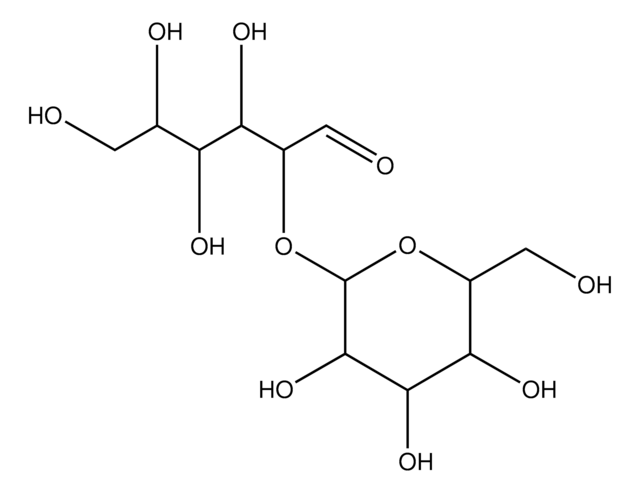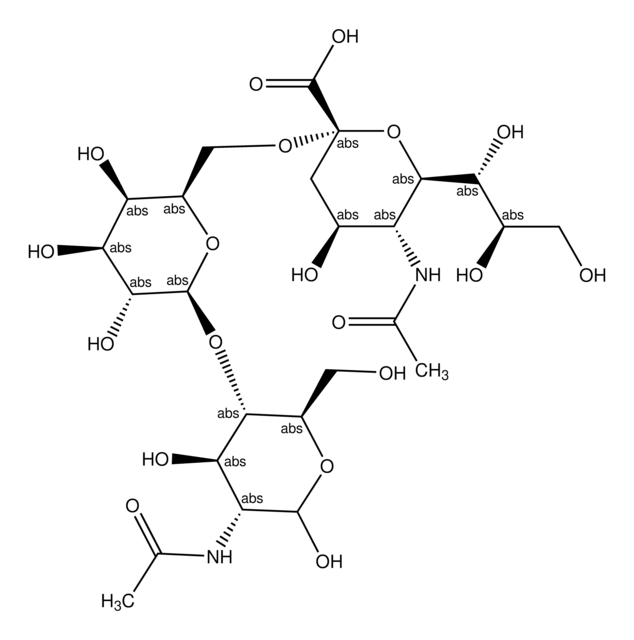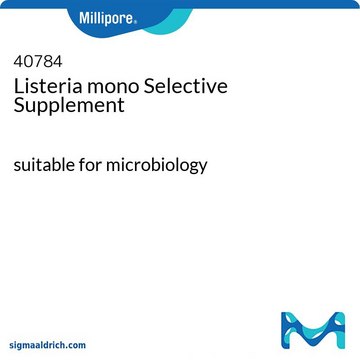L5152
Lewis-X trisaccharide
≥99% (HPLC)
Synonym(s):
α-L-Fuc-(1→3)-[β-D-Gal-(1→4)]-D-GlcNAc, Lex Trisaccharide
Sign Into View Organizational & Contract Pricing
All Photos(1)
About This Item
Empirical Formula (Hill Notation):
C20H35NO15
CAS Number:
Molecular Weight:
529.49
MDL number:
UNSPSC Code:
12352200
PubChem Substance ID:
Recommended Products
Assay
≥99% (HPLC)
storage temp.
2-8°C
SMILES string
CC1OC(OC(C(NC(C)=O)C=O)C(OC2OC(CO)C(O)C(O)C2O)C(O)CO)C(O)C(O)C1O
InChI
1S/C20H35NO15/c1-6-11(27)13(29)15(31)19(33-6)35-17(8(3-22)21-7(2)25)18(9(26)4-23)36-20-16(32)14(30)12(28)10(5-24)34-20/h3,6,8-20,23-24,26-32H,4-5H2,1-2H3,(H,21,25)
InChI key
ZAFUNKXZZPSTLA-UHFFFAOYSA-N
Biochem/physiol Actions
Lewis-X is a developmentally regulated antigen and has been suggested to be a tumor marker. At high concentrations, it inhibits P-selectin−mediated adhesion.
Other Notes
Lewis-X is the trisaccharide part of the sialyl-Lewis-X tetrasaccharide, the suggested ligand for P- and E-selectins.
Regulatory Information
新产品
Choose from one of the most recent versions:
Already Own This Product?
Find documentation for the products that you have recently purchased in the Document Library.
Wilkins, W.M., et al.
ACS Symp. Ser., 519, 34-34 (1993)
L A Lasky
Science (New York, N.Y.), 258(5084), 964-969 (1992-11-06)
Although a bewildering array of cell surface carbohydrate structures have been described, the physiological relevance of any of these complex molecules has often eluded biologists. A family of cell surface glycoproteins, the "selectins," has a characteristic ability to use some
Marko Haramija et al.
Rapid communications in mass spectrometry : RCM, 31(20), 1709-1719 (2017-08-15)
Affinity mass spectrometry (AMS) is an emerging tool in the field of the study of protein•carbohydrate complexes. However, experimental obstacles and data analysis are preventing faster integration of AMS methods into the glycoscience field. Here we show how analysis of
Our team of scientists has experience in all areas of research including Life Science, Material Science, Chemical Synthesis, Chromatography, Analytical and many others.
Contact Technical Service